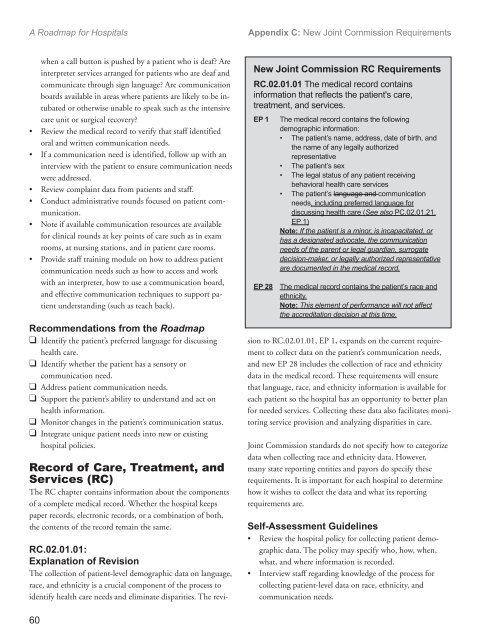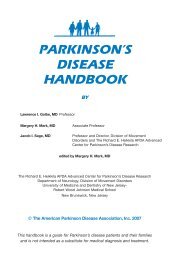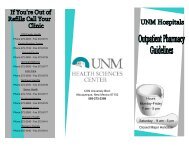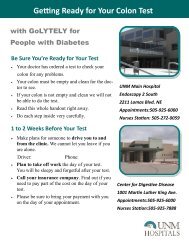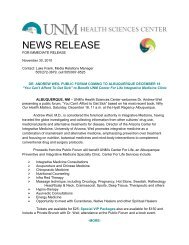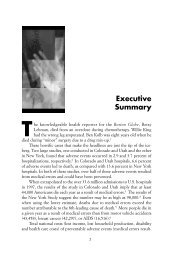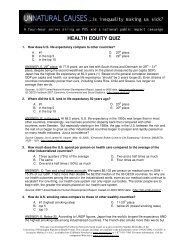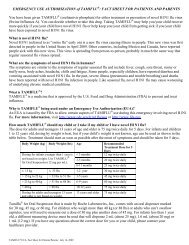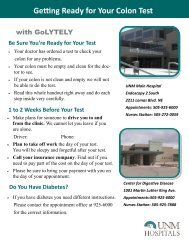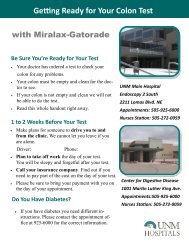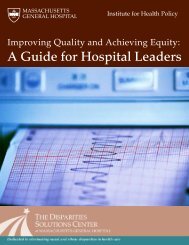Advanced Effective Communication, Cultural Competence, and ...
Advanced Effective Communication, Cultural Competence, and ...
Advanced Effective Communication, Cultural Competence, and ...
You also want an ePaper? Increase the reach of your titles
YUMPU automatically turns print PDFs into web optimized ePapers that Google loves.
A Roadmap for Hospitals<br />
Appendix C: New Joint Commission Requirements<br />
when a call button is pushed by a patient who is deaf? Are<br />
interpreter services arranged for patients who are deaf <strong>and</strong><br />
communicate through sign language? Are communication<br />
boards available in areas where patients are likely to be intubated<br />
or otherwise unable to speak such as the intensive<br />
care unit or surgical recovery?<br />
• Review the medical record to verify that staff identified<br />
oral <strong>and</strong> written communication needs.<br />
• If a communication need is identified, follow up with an<br />
interview with the patient to ensure communication needs<br />
were addressed.<br />
• Review complaint data from patients <strong>and</strong> staff.<br />
• Conduct administrative rounds focused on patient communication.<br />
• Note if available communication resources are available<br />
for clinical rounds at key points of care such as in exam<br />
rooms, at nursing stations, <strong>and</strong> in patient care rooms.<br />
• Provide staff training module on how to address patient<br />
communication needs such as how to access <strong>and</strong> work<br />
with an interpreter, how to use a communication board,<br />
<strong>and</strong> effective communication techniques to support patient<br />
underst<strong>and</strong>ing (such as teach back).<br />
Recommendations from the Roadmap<br />
❑ Identify the patient’s preferred language for discussing<br />
health care.<br />
❑ Identify whether the patient has a sensory or<br />
communication need.<br />
❑ Address patient communication needs.<br />
❑ Support the patient’s ability to underst<strong>and</strong> <strong>and</strong> act on<br />
health information.<br />
❑ Monitor changes in the patient’s communication status.<br />
❑ Integrate unique patient needs into new or existing<br />
hospital policies.<br />
Record of Care, Treatment, <strong>and</strong><br />
Services (RC)<br />
The RC chapter contains information about the components<br />
of a complete medical record. Whether the hospital keeps<br />
paper records, electronic records, or a combination of both,<br />
the contents of the record remain the same.<br />
New Joint Commission RC Requirements<br />
RC.02.01.01 The medical record contains<br />
information that reflects the patient's care,<br />
treatment, <strong>and</strong> services.<br />
EP 1<br />
EP 28<br />
The medical record contains the following<br />
demographic information:<br />
• The patient’s name, address, date of birth, <strong>and</strong><br />
the name of any legally authorized<br />
representative<br />
• The patient’s sex<br />
• The legal status of any patient receiving<br />
behavioral health care services<br />
• The patient’s language <strong>and</strong> communication<br />
needs, including preferred language for<br />
discussing health care (See also PC.02.01.21,<br />
EP 1)<br />
Note: If the patient is a minor, is incapacitated, or<br />
has a designated advocate, the communication<br />
needs of the parent or legal guardian, surrogate<br />
decision-maker, or legally authorized representative<br />
are documented in the medical record.<br />
The medical record contains the patient’s race <strong>and</strong><br />
ethnicity.<br />
Note: This element of performance will not affect<br />
the accreditation decision at this time.<br />
RC.02.01.01:<br />
Explanation of Revision<br />
The collection of patient-level demographic data on language,<br />
race, <strong>and</strong> ethnicity is a crucial component of the process to<br />
identify health care needs <strong>and</strong> eliminate disparities. The revision<br />
to RC.02.01.01, EP 1, exp<strong>and</strong>s on the current requirement<br />
to collect data on the patient’s communication needs,<br />
<strong>and</strong> new EP 28 includes the collection of race <strong>and</strong> ethnicity<br />
data in the medical record. These requirements will ensure<br />
that language, race, <strong>and</strong> ethnicity information is available for<br />
each patient so the hospital has an opportunity to better plan<br />
for needed services. Collecting these data also facilitates monitoring<br />
service provision <strong>and</strong> analyzing disparities in care.<br />
Joint Commission st<strong>and</strong>ards do not specify how to categorize<br />
data when collecting race <strong>and</strong> ethnicity data. However,<br />
many state reporting entities <strong>and</strong> payors do specify these<br />
requirements. It is important for each hospital to determine<br />
how it wishes to collect the data <strong>and</strong> what its reporting<br />
requirements are.<br />
Self-Assessment Guidelines<br />
• Review the hospital policy for collecting patient demographic<br />
data. The policy may specify who, how, when,<br />
what, <strong>and</strong> where information is recorded.<br />
• Interview staff regarding knowledge of the process for<br />
collecting patient-level data on race, ethnicity, <strong>and</strong><br />
communication needs.<br />
60


